Spot On or Spot Off? Pleiospilos vs Lithops Identification Tips
Ever found yourself mesmerized by those fascinating living stones in the succulent world? Pleiospilos and Lithops may seem like twins at first glance, but they’re two distinct genera with captivating differences. Get ready to embark on an exciting journey as we unravel the living stone code!
While both Pleiospilos and Lithops belong to the Aizoaceae family, they’re as distinct as chalk and cheese. These tiny titans boast unique traits that set them apart, making proper identification a must for succulent enthusiasts. Brace yourselves for a showdown between these mesembryanthemum marvels!
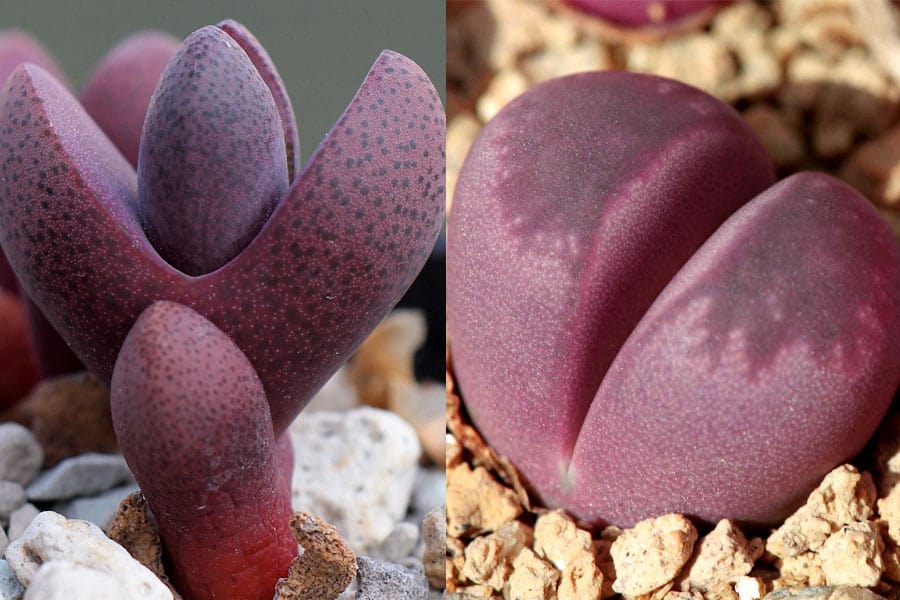
Related Post:
1,000 Types of Succulents With Pictures
Contents
Pleiospilos vs Lithos: How to Tell Them Apart
1. The Physical Appearance
Pleiospilos species tend to be larger, with some reaching up to 4 inches (10 cm) in diameter, while Lithops rarely exceed 2 inches (5 cm). Their leaf patterns and colors also diverge, with Pleiospilos sporting bold, intricate designs and Lithops often displaying subtler hues and markings.
2. The Bloom Time
Timing is everything! While Lithops typically bloom in autumn and winter, their Pleiospilos cousins prefer to flaunt their floral splendor in spring and summer. This difference in bloom cycles makes combining them in the same pot a risky endeavor.
3. Leaf Generations
Pleiospilos species can maintain leaves from multiple generations simultaneously, creating a captivating layered effect. In contrast, Lithops usually shed their old leaves entirely once the new pair emerges.
4. Water Wisdom
Quenching their thirst is a delicate dance. Lithops are true desert dwellers, requiring far less water than their Pleiospilos counterparts, especially during the winter months when they may go without a sip for 4-5 months.
5. Floral Finesse
When it comes to blooms, Pleiospilos steal the show with their large, eye-catching orange-yellowish flowers (some even sport pinkish segments), while Lithops opt for a more understated white or yellow palette, except for the orange-flowered L. verruculosa.
Pleiospilos vs Lithos: Photo Comparisons
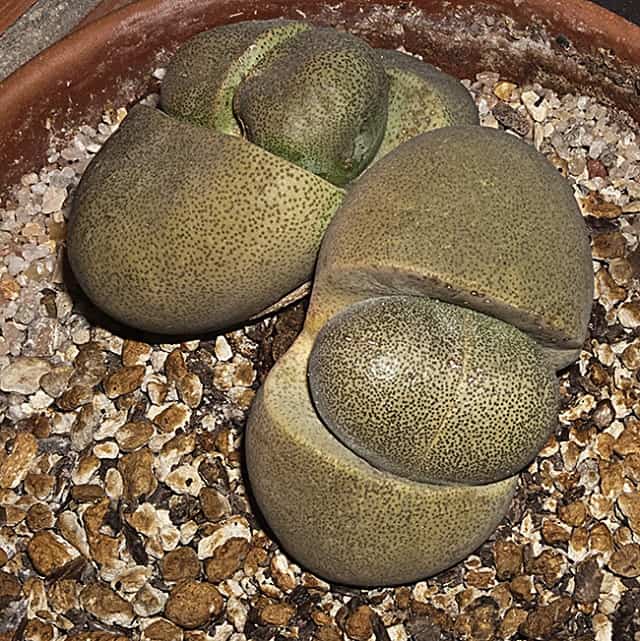
An adult specimen of Pleiospilos nelii, easily identifiable by its shape, size and pattern.
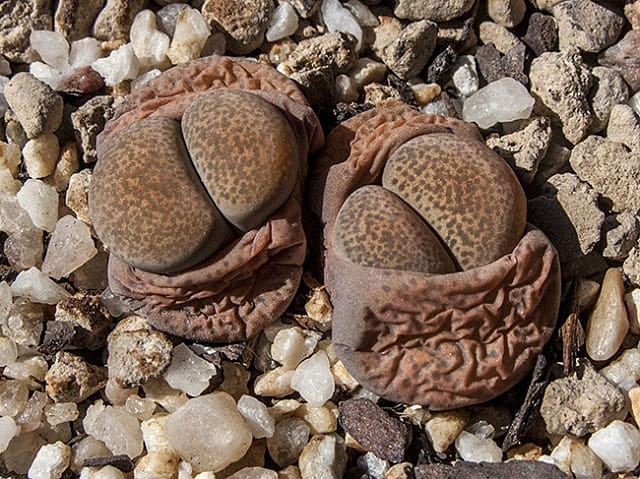
In my opinion, the only Lithops species that has a relatively similar pattern is the Lithops terricolor.
In any case, as you can see in this photo, a Lithops terricolor is very different from a Pleiospilos.
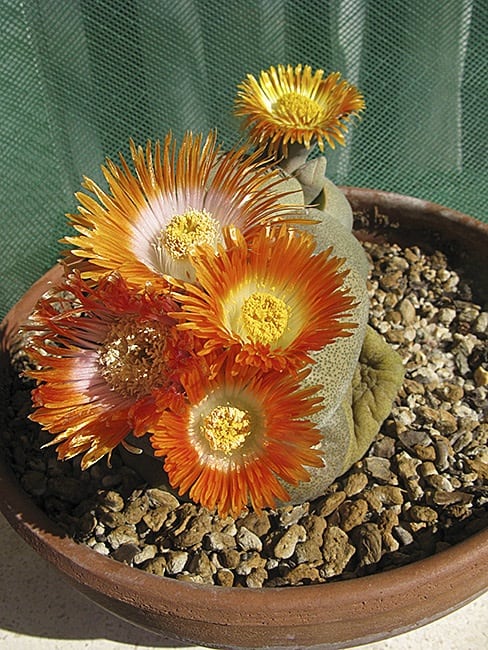
The difference becomes more evident when the plants bloom. The flowers of the Pleiospilos are very attractive and quite large, compared to the size of the plant. They are orange-yellowish in color (although some specimens may have pinkish segments) with the innermost region whitish.
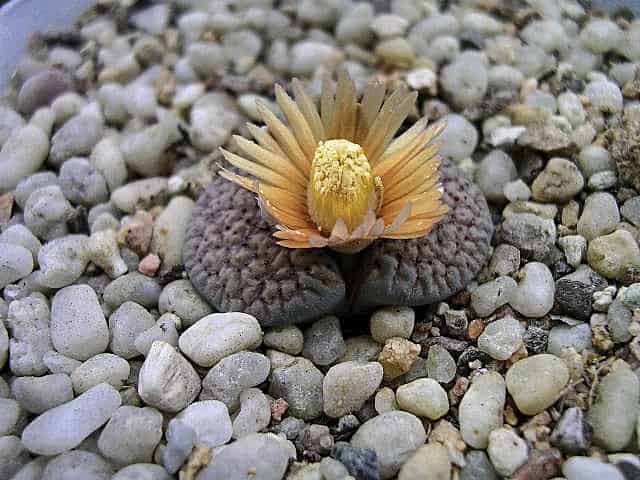
Flowers of Lithops are always white or yellow clearly. Except in the case of the Lithops verruculosa, which have orange flowers but, in any case, very different from the flowers of the Pleiospilos.
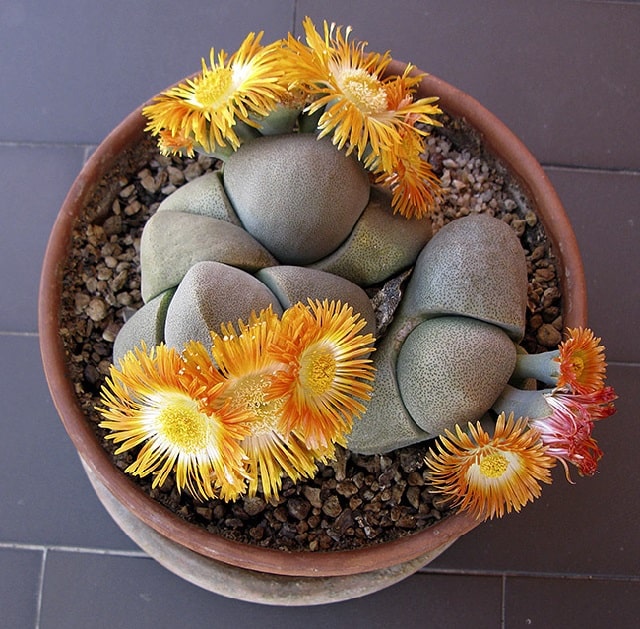
Very often, in the genus Pleiospilos, the flowers coexist with several pairs of leaves of different generations.
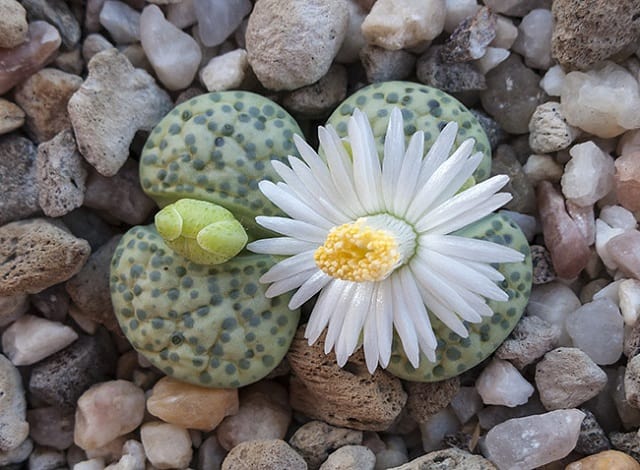
On the other hand, in the case of Lithops (in this case it is a Lithops fulviceps v. Fulviceps ‘Aurea’ ) when the plants bloom, there is usually no trace of the leaves from previous generations.
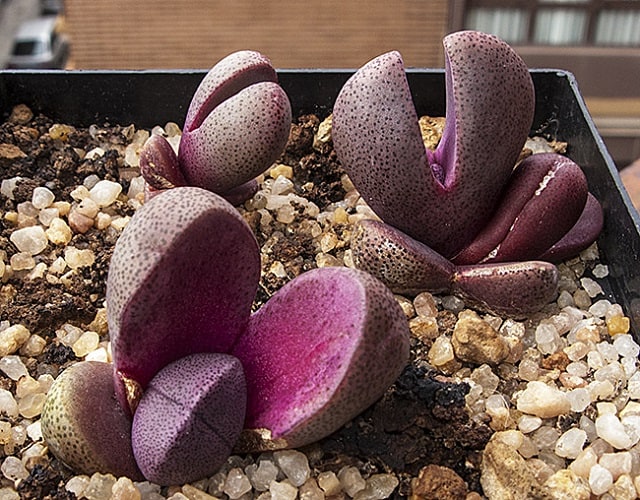
In the case of the cultivar Pleiospilos nelii ‘Royal Flush’, there is a certain resemblance to Lithops optica ‘Rubra’. In this sample it can be seen that there are notable coincidences both in color and size.
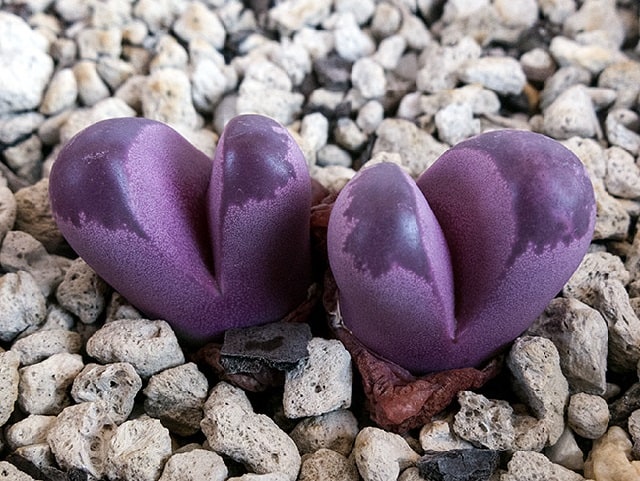
But, if we look closely, there are also distinctive features that differentiate them, such as the mottling that can be seen in the previous photograph and that does not exist in this Lithops optica ‘Rubra’ .
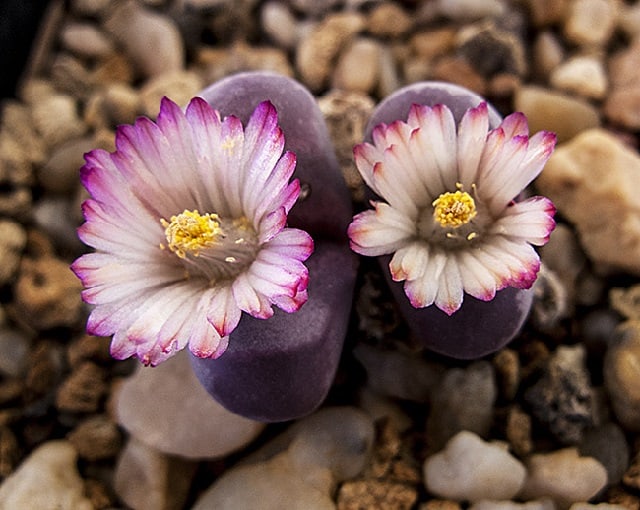
And, if there is any doubt, just wait for our Lithops optica ‘Rubra’ to bloom, since their white flowers have nothing to do with the characteristic flowers of the Pleiospilos nelii.
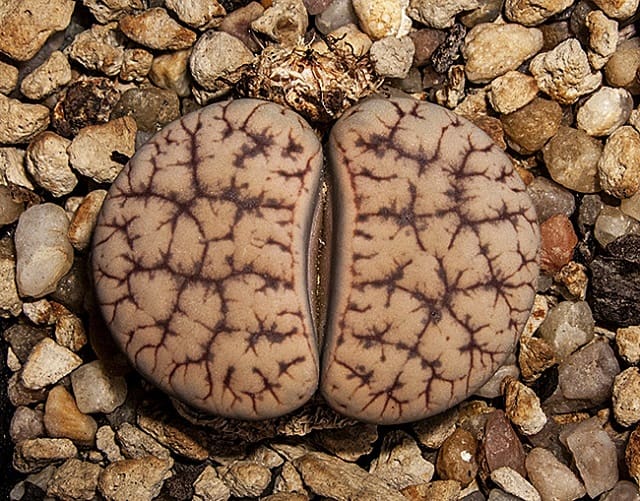
Except for the few similarities that we have seen in the previous photographs, in the rest of the Lithops species, the differences are more than evident, as can be seen in this beautiful Lithops gracilidelineata, which looks like a Pleiospilos like an egg to a chestnut.
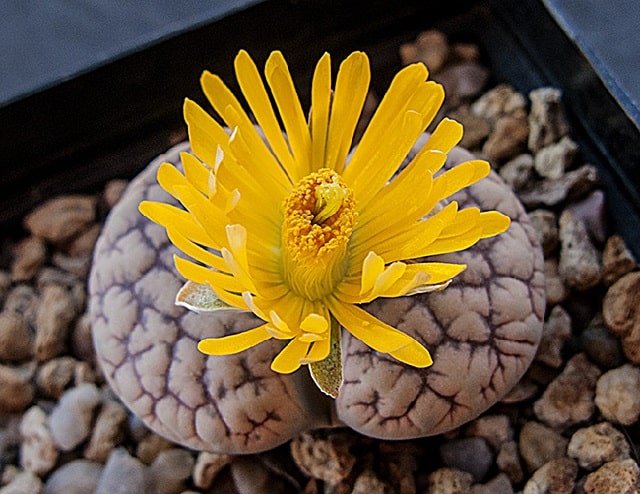
These differences in appearance are equally evident when the plants bloom.
Conclusion: Pleiospilos vs Lithops
While Pleiospilos and Lithops may share a family connection, their distinct characteristics make proper identification crucial. From size and leaf patterns to bloom cycles and water needs, these living stones demand our utmost attention and care. So, the next time you encounter these mesembryanthemum marvels, take a closer look and let the living stone code unravel before your eyes!
